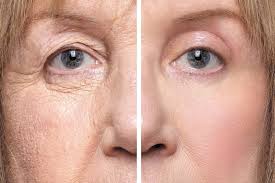Many people considering eyelid surgery wonder, "How much downtime is required after eyelid surgery?" This is a common and important question because recovery plays a big role in planning for this cosmetic procedure. Eyelid Surgery In Dubai(جراحة الجفن في دبي), also known as blepharoplasty, is performed to rejuvenate the eye area, improve vision in cases of sagging eyelids, and enhance facial appearance. Recovery time depends on the individual’s healing process, the type of surgery performed, and the level of post-procedure care. Understanding the downtime, possible swelling, and when you can resume normal activities is essential before making a decision.
What is treatment and how it works?
Eyelid surgery involves the removal or repositioning of excess skin, fat, and sometimes muscle from the upper or lower eyelids. The procedure can address droopy eyelids, puffiness, and under-eye bags. It works by tightening the skin and tissues around the eyes, which can reduce signs of aging and even improve peripheral vision in certain cases. The technique used depends on whether the surgery is for the upper eyelids, lower eyelids, or both. Recovery typically includes mild swelling, bruising, and temporary sensitivity to light.
Importance of treatment:
The eyes are one of the first areas to show signs of aging. Over time, skin loses elasticity, and fat deposits may shift, leading to hooded eyelids, puffiness, or sagging skin. Eyelid surgery not only restores a youthful look but can also enhance vision in those whose drooping eyelids interfere with sight. Beyond aesthetics, this procedure can boost self-confidence and improve how refreshed and alert you appear. When discussing downtime, it’s important to remember that allowing proper healing time ensures optimal results and reduces the risk of complications.
Types of treatment:
There are different approaches to eyelid surgery, and downtime may vary depending on the method used:
- Upper eyelid surgery – Focuses on removing excess skin and sometimes fat from the upper eyelids.
- Lower eyelid surgery – Targets under-eye bags, puffiness, and wrinkles beneath the eyes.
- Combination blepharoplasty – Addresses both upper and lower eyelids in a single procedure.
- Laser-assisted eyelid surgery – Uses advanced laser technology to reduce bleeding and swelling, potentially shortening downtime.
Each type of surgery has its own healing period, but in most cases, patients can expect swelling and bruising to improve significantly within 7–14 days, with complete recovery taking a few weeks.
Preparation and aftercare:
Proper preparation and aftercare are vital for a smooth recovery and shorter downtime after eyelid surgery.
Preparation tips:
- Avoid blood-thinning medications or supplements before the procedure (with medical guidance).
- Stop smoking and limit alcohol intake to promote faster healing.
- Arrange for someone to drive you home after surgery and assist for the first 24 hours.
Aftercare guidelines:
- Use cold compresses to minimize swelling and bruising.
- Keep your head elevated while resting to reduce fluid buildup.
- Follow all prescribed eye drop or ointment instructions to prevent dryness and infection.
- Avoid strenuous activities and heavy lifting for at least 2 weeks.
- Protect your eyes from sunlight and wind with sunglasses.
Ideal candidate:
The best candidates for eyelid surgery are individuals who have sagging eyelids, puffiness, or under-eye bags, and are in good overall health. Non-smokers with realistic expectations about downtime and results typically heal faster. It’s important to have no uncontrolled medical conditions that may slow recovery, such as bleeding disorders or severe eye problems.
How to choose the right clinic?
Selecting the right facility for eyelid surgery can directly impact both results and downtime. Look for:
- Certified and experienced cosmetic or oculoplastic surgeons.
- A strong portfolio of before-and-after photos.
- Positive patient reviews focusing on recovery experience.
- Clear post-operative care instructions and follow-up appointments.
Risks:
While eyelid surgery is generally safe, there are potential risks, such as:
- Temporary blurred vision or light sensitivity
- Infection or excessive bleeding
- Visible scarring or asymmetry
- Dry eyes or discomfort during healing
Minimizing these risks requires following all aftercare instructions and attending follow-up visits.
Benefits:
The benefits of Eyelid Surgery(جراحة الجفن) go beyond cosmetic improvements:
- Fresher, more youthful appearance
- Better-defined eye contours
- Enhanced field of vision (if drooping eyelids were obstructing sight)
- Improved self-confidence and comfort with appearance
FAQs:
How much downtime is required after eyelid surgery?
Most people can return to light activities within a week, but full recovery usually takes 2–4 weeks.
When can I wear makeup after eyelid surgery?
Eye makeup is generally safe to apply after about 10–14 days, once incisions are fully healed.
Is the recovery painful?
Discomfort is usually mild and manageable with prescribed medication or over-the-counter pain relief.
Will swelling last long?
Swelling is most noticeable in the first week and gradually improves over 2–3 weeks.
Can I exercise after eyelid surgery?
Strenuous exercise should be avoided for at least 2–3 weeks to prevent complications.
Conclusion:
Knowing how much downtime is required after eyelid surgery is essential for planning a smooth recovery. While most patients resume light activities within a week, full healing can take several weeks depending on the type of procedure and individual factors. By following proper preparation and aftercare, you can minimize downtime, enjoy long-lasting results, and enhance both your appearance and confidence.

